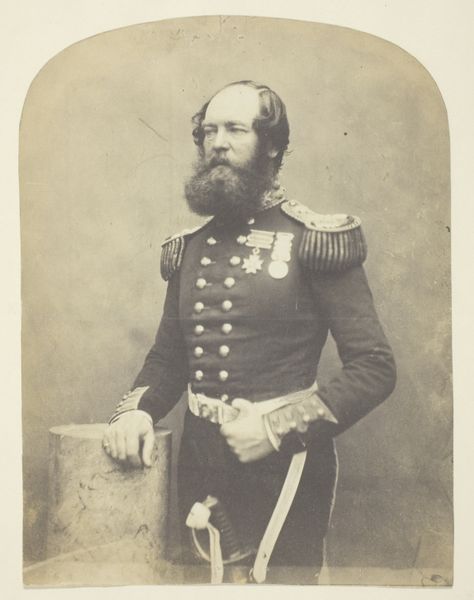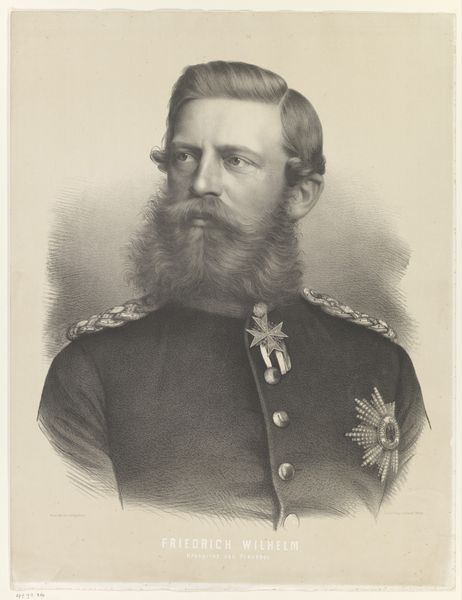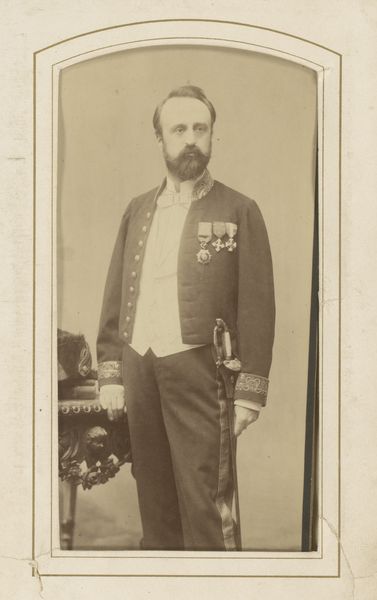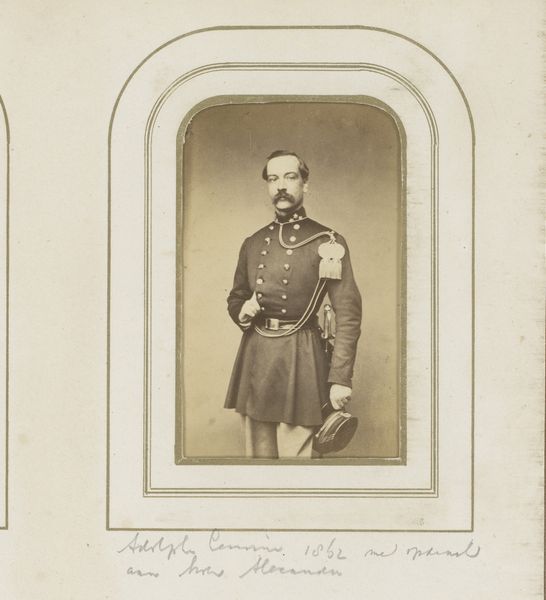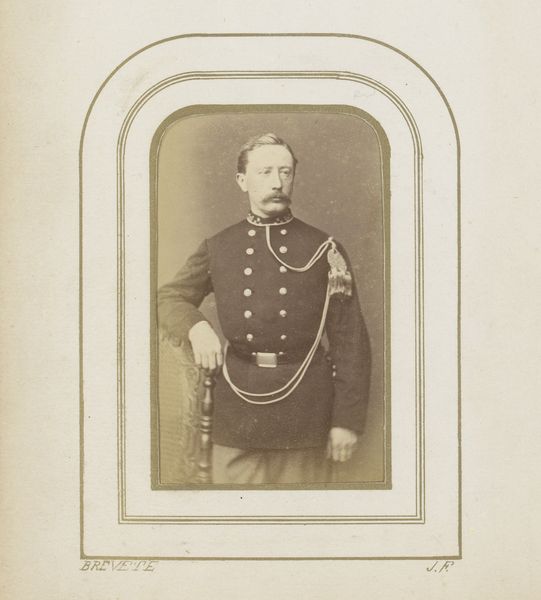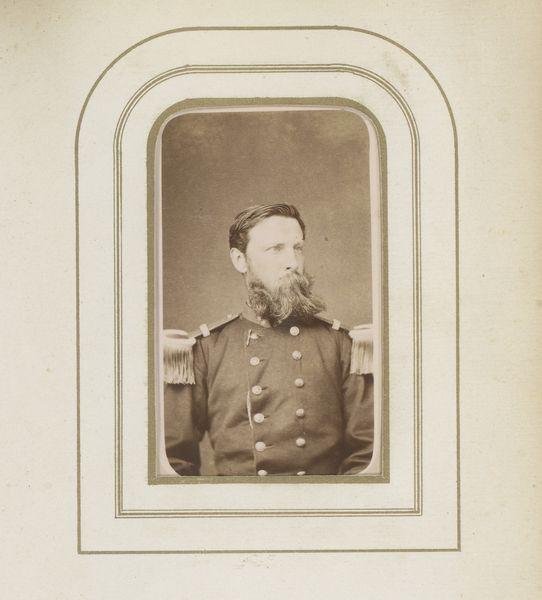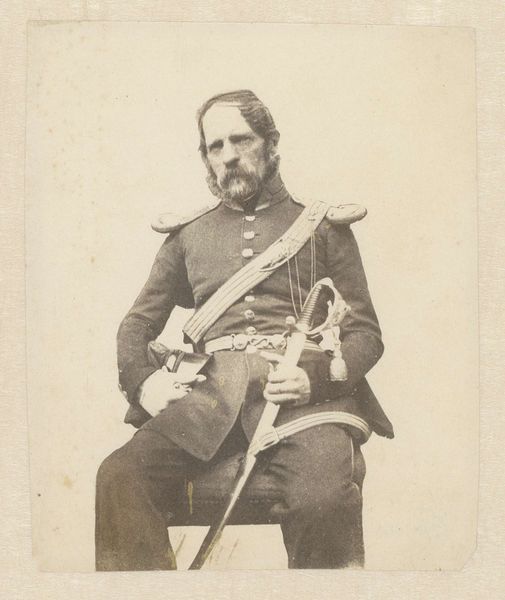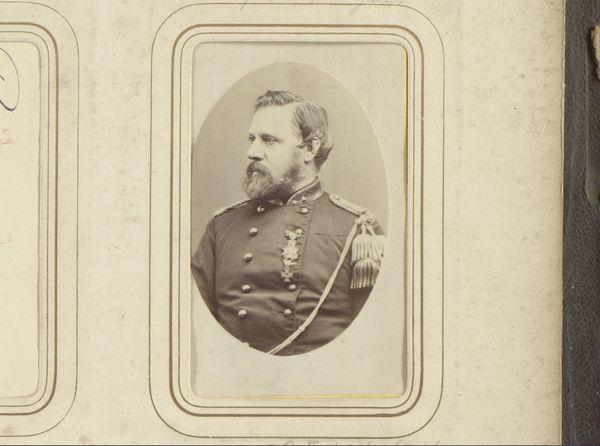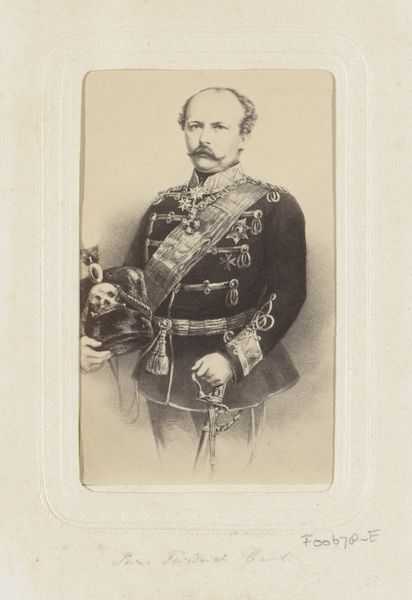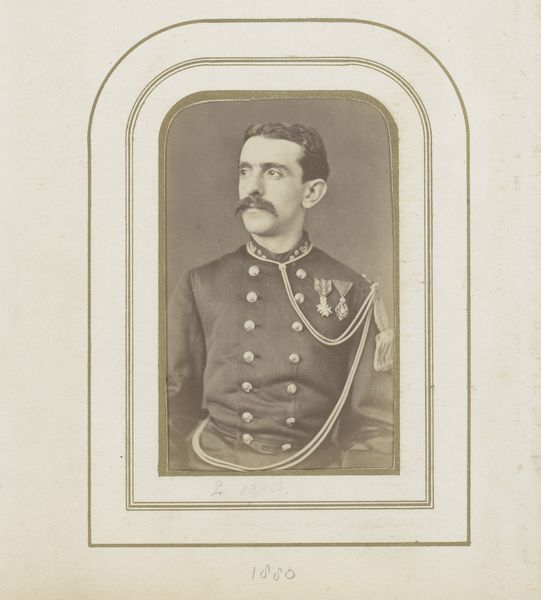
Captain Verschoyle, Grenadier Guards (an Early Photographer), Taken at the Crimea 1855
0:00
0:00
Dimensions: 17.4 × 12.9 cm (image/paper); 25.7 × 18.4 cm (mount)
Copyright: Public Domain
Editor: This is Roger Fenton's "Captain Verschoyle, Grenadier Guards (an Early Photographer), Taken at the Crimea," a gelatin silver print from 1855. The captain’s stern expression, along with his ornamented uniform and sword, project authority, but also hint at the cost of war. What do you see in this portrait beyond the surface? Curator: Well, I see a powerful statement about the construction of masculinity and national identity in the context of 19th-century British Imperialism. Fenton was commissioned to document the Crimean War, yet here he offers us a carefully constructed portrait of a military man. It's not just a picture; it's a performance of power, meticulously crafted for a Victorian audience grappling with the realities of war far away. Editor: Performance of power? Curator: Exactly. Look at the pose, the meticulously detailed uniform, and even the soft lighting. Fenton is invoking a romantic ideal of the soldier – brave, stoic, a symbol of British might. However, we have to remember that photography at this time was also used as a propaganda tool, so whose narrative is truly being highlighted and at whose expense? Do you get a sense that this ideal is at odds with the brutal realities of war? Editor: I do. It feels like a carefully managed image, more about projecting strength than revealing truth. Thinking about who wasn't being photographed, who didn't have the opportunity to have their image presented in such a curated manner. Curator: Precisely! Considering who has the access and privilege is key to understanding that context, wouldn't you agree? Editor: Absolutely! I'll never look at a portrait from this period in the same way again. It really makes you consider whose stories are told and whose are left out of the frame. Curator: And that critical lens is vital to how we engage with art history as a whole. This is the crucial message I feel that we've extracted and delivered today.
Comments
No comments
Be the first to comment and join the conversation on the ultimate creative platform.

